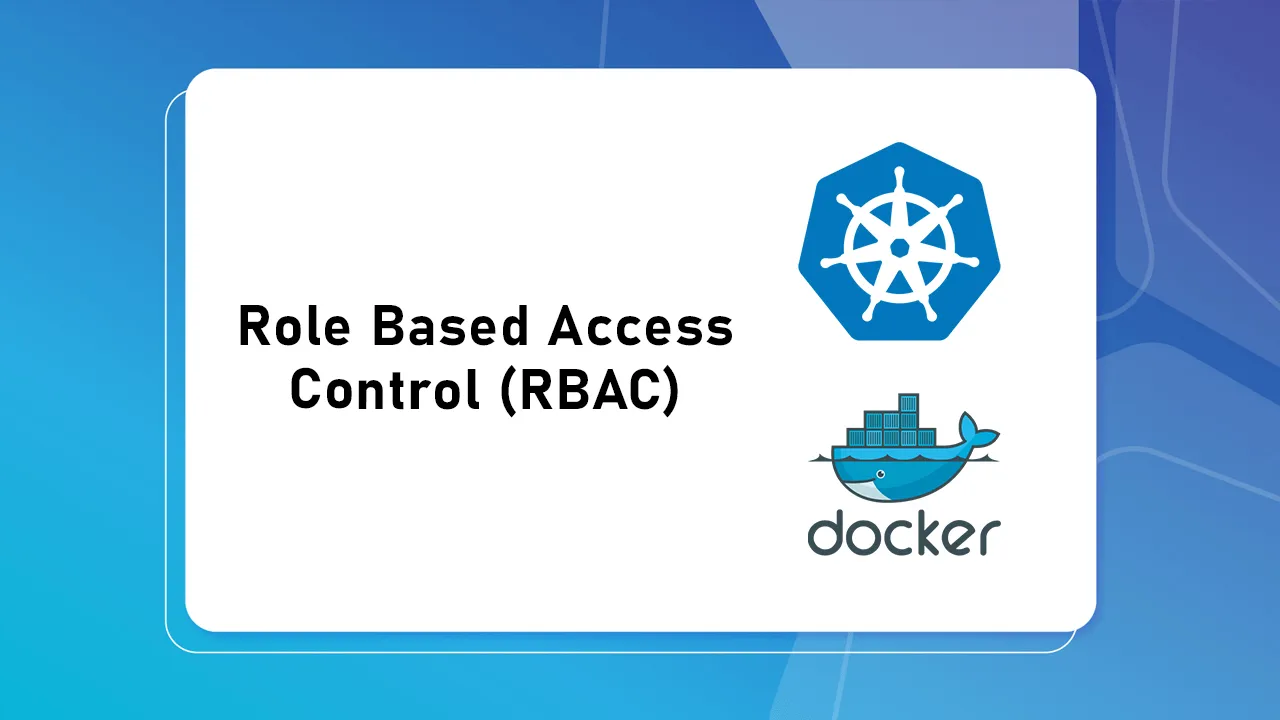☑️Day 43: Diving In RBAC, Generating Keys and Keys and Certificates in Kubernetes🚀
 Kedar Pattanshetti
Kedar Pattanshetti
🔹Table of Contents :
Introduction
Why Use RBAC?
Components of RBAC
Role
RoleBinding
ClusterRole and ClusterRoleBinding
Generating Keys and Certificates
Hands-On Practice with RBAC
Task 1: Creating a Role and RoleBinding
Task 2: Using ClusterRole and ClusterRoleBinding
Real-Time Scenarios and Examples
✅1. Introduction
Role-Based Access Control (RBAC) in Kubernetes is a security mechanism that manages access permissions to Kubernetes resources. It ensures that only authorized users and services can perform specific actions on resources within the cluster.
✅2. Why Use RBAC?
Security: Helps control who can access and modify resources, ensuring the cluster's integrity.
Granular Control: Allows fine-grained access controls, defining permissions for each user or service.
Compliance: Fulfills regulatory requirements by restricting access to sensitive resources.
✅3. Components of RBAC
a. Role
Defines a set of permissions (verbs) for accessing specific resources (pods, services, etc.) within a namespace.
Example: A Role may allow a user to "get" or "list" pods in a namespace.
b. RoleBinding
Associates a Role with a user, group, or service account, granting them the permissions specified in the Role.
Works within the scope of a single namespace.
c. ClusterRole and ClusterRoleBinding
ClusterRole: Similar to Role but can be used across the entire cluster.
ClusterRoleBinding: Associates a ClusterRole with a user, group, or service account at the cluster level.
✅4. Generating Keys and Certificates
Keys and certificates are used for secure communication in Kubernetes.
Generating a Key:
Use OpenSSL or similar tools to generate a private key.
Example:
openssl genpkey -algorithm RSA -out myprivatekey.key
Creating a Certificate Signing Request (CSR):
A CSR is required to generate a certificate signed by a Certificate Authority (CA).
Example:
openssl req -new -key myprivatekey.key -out myrequest.csr
Generating a Certificate:
Use the CA to sign the CSR, creating a certificate.
Example:
openssl x509 -req -in myrequest.csr -signkey myprivatekey.key -out mycertificate.crt
✅5. Hands-On Practice with RBAC
Task 1: Creating a Role and RoleBinding
Step 1: Create a Role named
pod-readerto allow "get" and "list" permissions on pods.apiVersion: rbac.authorization.k8s.io/v1 kind: Role metadata: namespace: default name: pod-reader rules: - apiGroups: [""] resources: ["pods"] verbs: ["get", "list"]Apply the Role using:
kubectl apply -f pod-reader.yaml
Step 2: Create a RoleBinding to assign this Role to a user.
apiVersion: rbac.authorization.k8s.io/v1 kind: RoleBinding metadata: name: read-pods namespace: default subjects: - kind: User name: "john" apiGroup: rbac.authorization.k8s.io roleRef: kind: Role name: pod-reader apiGroup: rbac.authorization.k8s.ioApply the RoleBinding using:
kubectl apply -f read-pods.yaml
Task 2: Using ClusterRole and ClusterRoleBinding
Step 1: Create a ClusterRole for accessing all pods across all namespaces.
apiVersion: rbac.authorization.k8s.io/v1 kind: ClusterRole metadata: name: cluster-pod-reader rules: - apiGroups: [""] resources: ["pods"] verbs: ["get", "list"]Apply the ClusterRole using:
kubectl apply -f cluster-pod-reader.yaml
Step 2: Create a ClusterRoleBinding to assign the ClusterRole to a user.
apiVersion: rbac.authorization.k8s.io/v1 kind: ClusterRoleBinding metadata: name: cluster-read-pods subjects: - kind: User name: "john" apiGroup: rbac.authorization.k8s.io roleRef: kind: ClusterRole name: cluster-pod-reader apiGroup: rbac.authorization.k8s.ioApply the Cluster Role Binding using:
kubectl apply -f cluster-read-pods.yaml
✅6. Real-Time Scenarios and Examples
Scenario 1: Granting Developers Limited Access: Allow a group of developers to view pods in a development namespace without giving them full administrative privileges.
Scenario 2: Securing Sensitive Resources: Use RBAC to ensure that only authorized personnel can access and modify production configurations.
Scenario 3: Automated DevOps Pipelines: Create service accounts with RBAC to run automated scripts with specific permissions for deployment.
✅Commands Recap
Create a Role:
kubectl apply -f <role-file>.yamlCreate a RoleBinding:
kubectl apply -f <rolebinding-file>.yamlView Roles:
kubectl get roles -n <namespace>View RoleBindings:
kubectl get rolebindings -n <namespace>Generate a Key:
openssl genpkey -algorithm RSA -out myprivatekey.keyCreate a CSR:
openssl req -new -key myprivatekey.key -out myrequest.csrGenerate a Certificate:
openssl x509 -req -in myrequest.csr -signkey myprivatekey.key -out mycertificate.crt
🚀Thanks for joining me on Day 43! Let’s keep learning and growing together!
Happy Learning! 😊
#90DaysOfDevOps
Subscribe to my newsletter
Read articles from Kedar Pattanshetti directly inside your inbox. Subscribe to the newsletter, and don't miss out.
Written by
